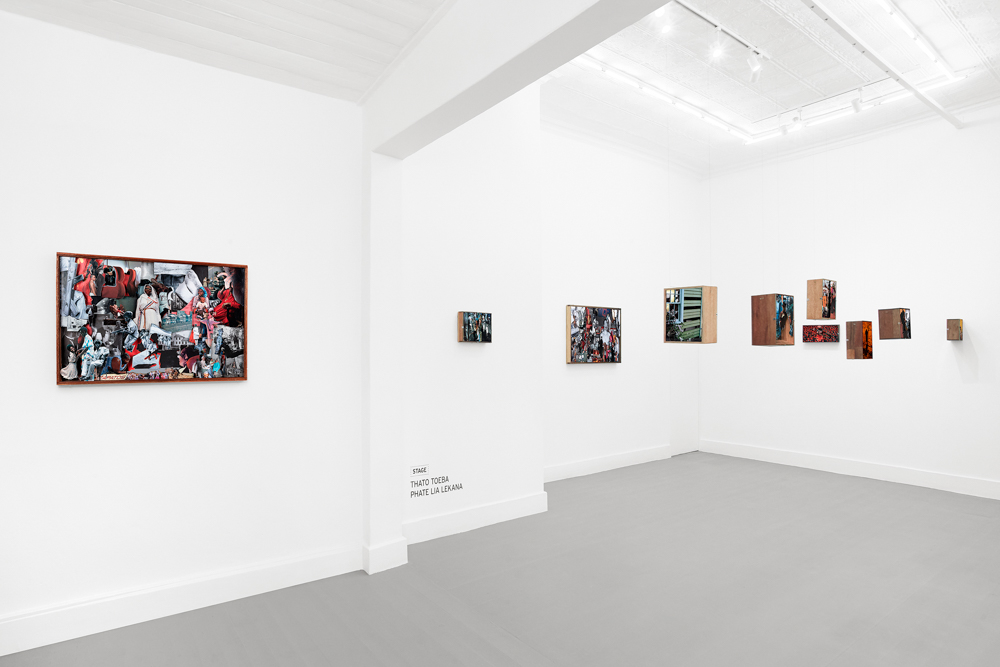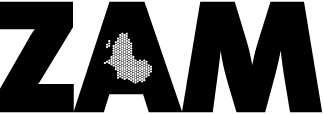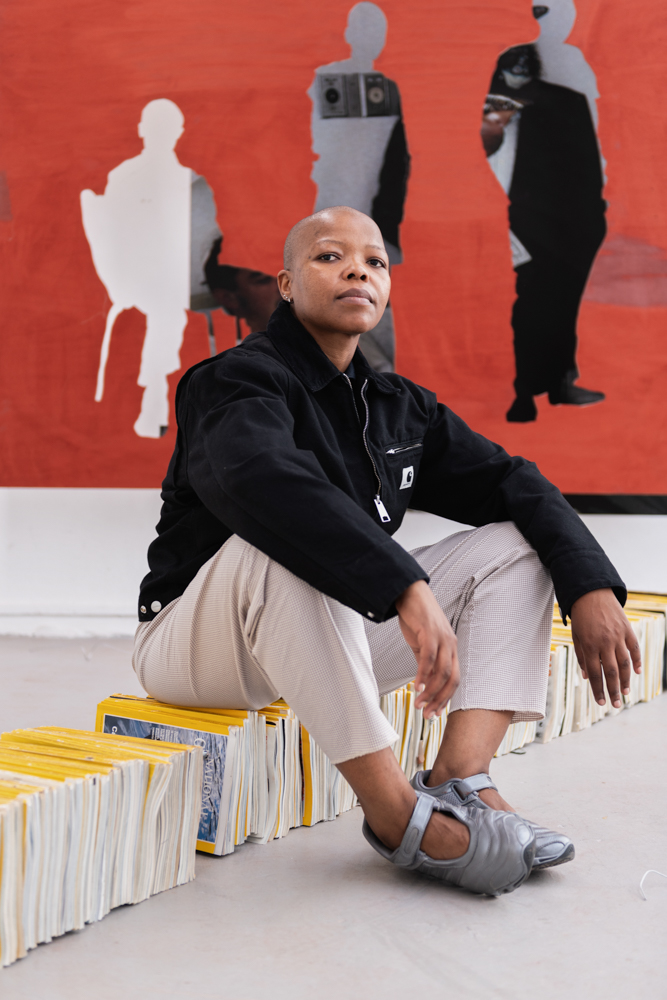Just days after being named the 2025 FNB Art Prize winner, Thato Toeba was already back in Amsterdam, where they are currently based, while I am based in Johannesburg, making our conversation a warm and playful call across continents. Born in 1990 in Maseru, Lesotho, Toeba is an artist, researcher, and lawyer whose work spans collage, photomontage, and mixed-media assemblage. Even online, Toeba’s humour and generosity shone through. when reflecting on the quiet evolution of their visual language, and the anticipation of their upcoming Johannesburg Art Gallery (JAG) exhibition.
Thembeka Heidi Sincuba: Congratulations for winning the FNB Art prize! What does it really mean to you? Does the recognition feel like you’re finally being seen, or does it feel a bit icky, knowing it can also mean being co-opted and made palatable to the institution?
Thato Toeba: Definitely not icky. I look at the artists who’ve received this award before, people I personally looked up to even before I became an artist . They were almost mythical to me. The art prize itself feels mythical. It’s not a very generous award financially, but there’s something endearing about it, a spirit that feels aligned, very much a big thing in its own way. I think it’s about connection more than money.
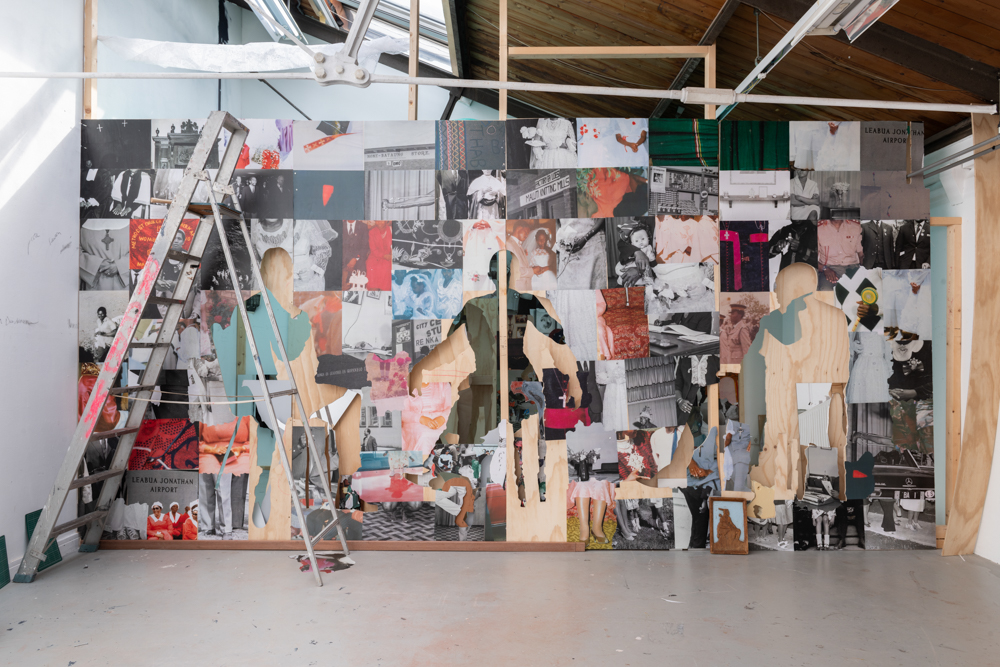
THS: I remember the day you won, when you gave your speech, you mentioned that the prize money has remained the same for years.
TT: Yes, because that’s ridiculous! I was friends with Dada Khanyisa when they won, so I knew it was a big deal. But when I checked, since 2011 the prize has been 100,000 Rand — still the same. It’s very unreasonable. (Laughs out loud) It’s not a joke, though; this is production money for the show at JAG. It’s not enough for the show alone, let alone other things. But I love the energy of it. I don’t care much about the money; I appreciate the opportunity to show my work.
THS: You’ve used the word “propaganda” to describe your work. Could you elaborate on that?
TT: Sure. When I studied international law at University of the Western Cape (UWC) in 2015, it was a wild year. The International Criminal Court (ICC) issued an arrest warrant for Sudanese president Omar al-Bashir. South Africa was supposed to act but didn’t, and there was an African Union push to create a continental criminal court. It was a chaotic, intense, and very political moment.
Propaganda
The whole program was fully funded and selective — brilliant lawyers from across Africa. Coming from Lesotho, I was naïve. But I realized early on: all these official narratives, these so-called truths, are propaganda. News outlets, governments, courts — they claim objectivity, but it’s all curated, controlled.
Law is meant to be objective, yet systems like apartheid or even the ICC are “legal” but can propagate injustice. That’s exactly what I explore in my art — the manipulation of narratives, the construction of reality, the myth-making. The experience at UWC, this surreal intersection of law, politics, and protest, led me to see that making art is another way of making the world ourselves. Collage, for me, allows me to “propagandize” in a way that exposes this posture of truth.
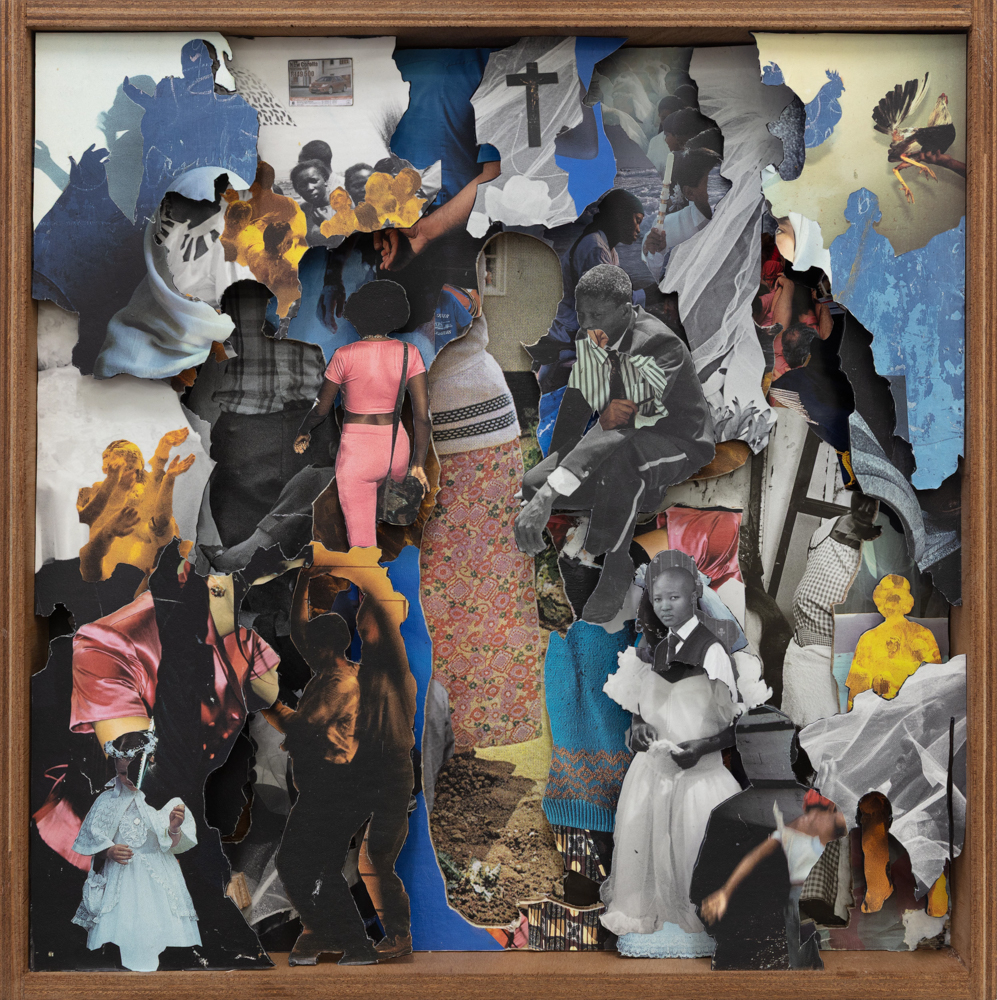
THS: I guess it’s fair to read your practice as political, but that term can suggest a certain objectivity or truth. In your practice, what exactly is the truth you’re trying to get at?
TT: I don’t know that we can ever really arrive at a single truth, especially since truth is always viewed from multiple perspectives. That said, I do think my work is political because in making art, I am, in a sense, politicking.
“I am, in a sense, politicking”
Even in my undergraduate years at the University of Lesotho, I imagined I’d end up in positions of leadership, like prime minister. Politics, for me, is a kind of intellectual play — a debate, a strategic engagement with power. I’ve always loved constitutional law for that reason. I enjoy the logic, the maneuvering, the way law shapes freedoms, especially in human rights contexts.
But Lesotho’s politics are different. It can be more about maneuvering to stay in power, changing terms of office, or adjusting citizenship to influence leadership. It’s like a game, an intellectually beautiful one. That’s part of what I enjoy.
But it also has its exclusivity. I never loved the formalities: wigs, Latin, coded language. Practicing law in courtrooms could be tedious — the slow procedures, endless postponements. That rigidity, the lack of drama, made me step away. It’s not like on TV. I still love law and argumentation, but the practice as it exists is restrictive.
THS: What was it like growing up in Lesotho? How did that experience lead you to law, and eventually to art?
TT: I think there’s this sense of diplomacy in the way we approach things, maybe it’s a national temperament. Because of the way we were colonised, not like in settler colonies, where colonisers settled long-term, it was more remote. So we learned to exist alongside whiteness without engaging it intimately.
I grew up in this calm, measured way of being, and then entered South Africa during very turbulent times. I was so shocked. Everything was so confrontational until I left in 2019. I think those temperaments are what set us apart. People often judge South Africans as being weak or… I don’t know, but there’s a kind of endearing intensity.
South Africa was a shock
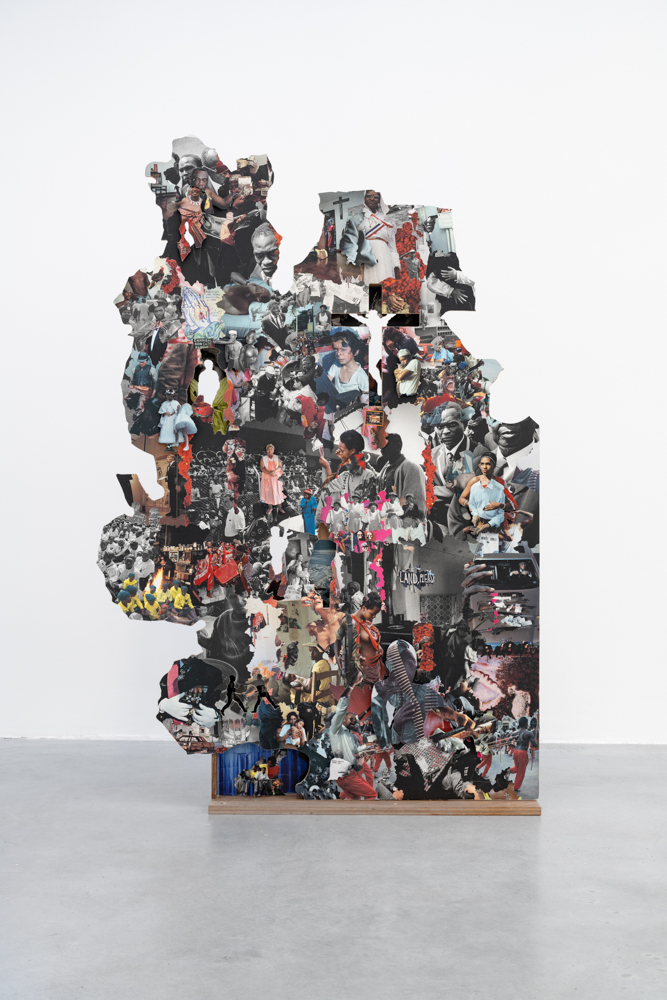
I remember a radio discussion when I had a show at Stevenson Gallery. They were debating whether Lesotho should be part of South Africa, and a woman called in, saying, ‘I don’t want to be part of South Africa because they love to be white people’s slaves.’ That really struck me. It’s like, we are not about that. If they enjoy that, let them.
Growing up in Lesotho also gave me this awareness of the collective. In ’98, during the World Cup in France, South Africa was playing, and everyone in my neighbourhood knew the names of the players. I still remember them: Lucas Radebe, Quintin Fortune, Brian Baloyi… My twin and sisters each picked a player. That was also the year South Africa invaded Lesotho during political turmoil. Mandela’s government sent troops to secure the dam in our district, part of the Lesotho Highlands Water Project (LHWP). That was shocking and formative.
Even so, there were so many things that connected us to South Africans — music, TV, culture. It’s fascinating how we share so much yet experience life so differently. Those collective memories and shared cultural touchpoints continue to influence how I think about identity, belonging, and even my work.
Difference and complexity
THS: Because of those early experiences, do you see difference as necessary, or inevitable in life?
TT: Absolutely. That awareness of difference, but also of similarity, informs everything I do. And, honestly, some of the frustrations I feel now like the conversations about Palestine, for instance, come from wanting nuance, wanting more than what gets pulled from the Internet. I want to honour complexity, both in my work and in how I see the world.
THS: Know what it reminds me of? That time after George Floyd when everyone was posting the black squares. After that, it was just, “Okay, I’ll post something, and that’s my activism.”
TT: Exactly. Like… the fuck? I also want to be creative with my activism. Like, don’t tell me how to cry! But there’s this siege that language is under, it’s difficult to even speak. Around Palestine discourse, any dissent is often intolerated, even within spaces that consider themselves democratic. I’m interested in that tension, because it’s kind of universal.
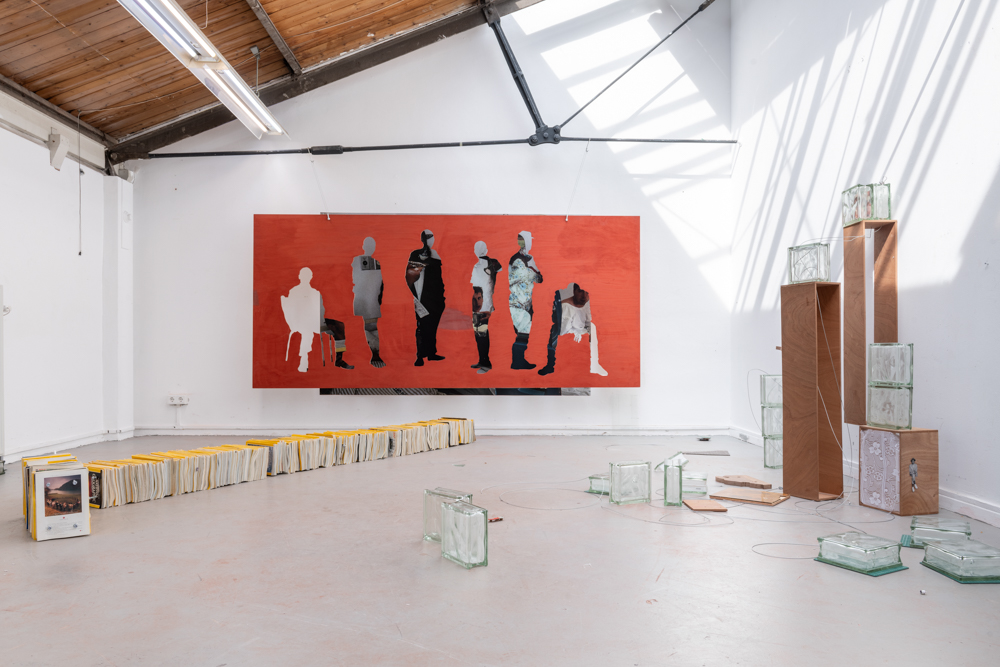
Moving around the world
THS: Moving around the world makes me constantly search for those threads. Do you think distance changes your sense of home? Do you still feel like a proper Lesotho citizen, or is home more fragmented now?
TT: I left home at 25, already unhappy with certain things. I stayed in Cape Town for about four years. Every time I returned home, it felt more foreign. My twin had new friends, my own friends were married… I didn’t know where I belonged.
Cape Town became home, and home became foreign. Just before the pandemic, I went back to Lesotho intending to stay six months… and ended up staying three years. The first year was romantic — seeing home from a distance, theorising it. Then reality hit, and I thought, “Get me out of here.” But it was beautiful too.
THS: And now you’ve spent two years in Amsterdam at the Rijksakademie. What’s the strangest or most unexpected way that city has influenced your practice?
“Artists are stars here”
TT: What struck me is how seriously they take art. Artists are stars there. You see Van Gogh posters everywhere. One time I had an open studio and the queues snaked around the building… It’s intense. Coming from Lesotho, where museums and galleries are scarce, it was fascinating. Even moving from law to art, I was amazed. I spent six months thinking, ‘Oh my god, this is serious. What did I get myself into?’
THS: Tell me about your process. How did you first get into collage, and how has it evolved?
TT: I have to credit Dada Khanyisa who taught me a lot about patience and process. I always liked making things, but I never had patience. One time, I was with Dada making a bench: measuring, sourcing materials, cutting, assembling. By the end of the week, I was struck by the process — the act of creation was as important as the finished object.
Playbook
But before that, I had a collage in my hands. When we were growing up, my twin and I used to play this thing we called “playbook.” It was with those old exercise books, the kind you get at school. When they were full, we’d repurpose them. We’d cut things out of catalogues, magazines. We’d claim things, images, pages: ‘This is my side, that’s your side.’
If it was a car, a family sitting around, or a fridge, we’d paste it into the book and build little fantasy worlds. You’d cut a fridge from a magazine, add the food inside, cut slits around the doors, and interact with it as if it were real, handing a cut-out juice bottle to someone visiting. My mum used to love it, although it often got so messy.
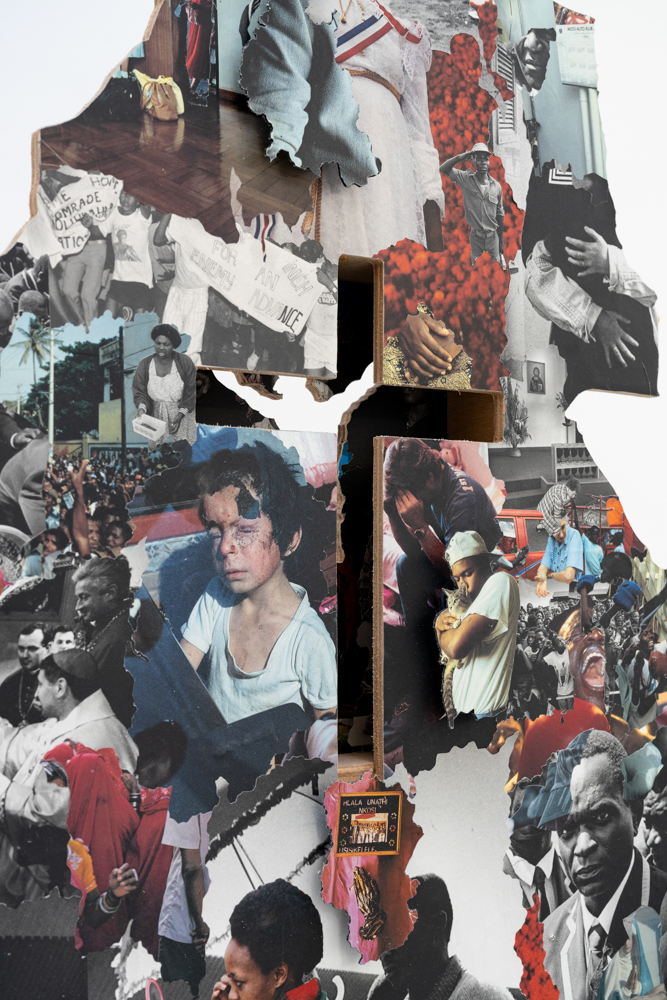
I see my work as an evolution of that exercise book: imagining spaces, people, and interactions from fragments, much like that old game, but on a larger, more conceptual scale. A lot of what I share on Instagram doesn’t exist as standalone work, it’s part of that process. I think a lot about engineering, structure, and the experience of space. And I love images from documentaries and Kodak-type vibes.
A cathedral-like space
THS: Looking forward to your upcoming show at JAG, have you started percolating? Do you have an inkling of what it might become?
TT: JAG feels perfect for my work. When I first visited Johannesburg, I went to see it. People kept congratulating me on the art prize,but being iffy about the gallery. I realized I needed to see the gallery itself.
I’ve developed an interest in site-specific installations. Making a show in a studio is one thing, but the space of a gallery creates the work too. JAG is a cathedral-like space; I grew up Catholic, so these kinds of monumental, aspirational spaces resonate with me. It’s very Johannesburg — the city of gold — its emergence and layering over history.
I’ve been thinking about “foreigner” as a concept: Johannesburg itself as the foreigner, not its people. The city has always been shaped by movement, migration, and settlement, and I want the work to address that. There’ll be lots of church imagery, plenty of pop culture, lots of fashion.
